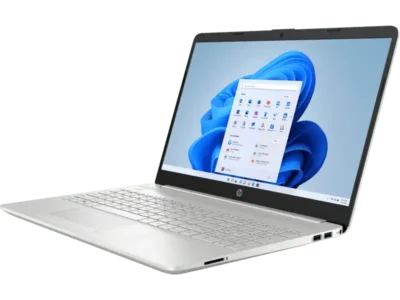Which connectivity ports are absolutely essential in a good laptop?
Multiple types of connectivity ports in laptops are needed to accommodate a variety of peripherals and external devices. Different ports provide different functions. For example, USB ports are used for connecting external storage, printers, and other peripherals, while HDMI ports are used for connecting to external displays. Having multiple ports allows laptop users to connect more devices, transfer data easily, and at the same time, make their laptops more versatile.
Let’s understand which ports are essential in a good laptop.
-
USB Ports
The most important port on any laptop is the USB port. This is because it allows you to connect to a wide range of external devices such as printers, scanners, external hard drives, and other USB devices. A good laptop should have at least two USB ports, preferably USB 3.0 or higher, as they provide faster data transfer speeds than USB 2.0.
-
HDMI Port
A laptop with an HDMI port is essential if you want to connect it to an external display such as a TV or a monitor. This is particularly important if you frequently give presentations or work with multiple screens. An HDMI port allows you to mirror your laptop screen or extend it to a larger display.
-
Ethernet Port
An Ethernet port is necessary if you need to connect to a wired network, especially in an office or a corporate environment. A laptop with an Ethernet port allows you to connect to the internet through a wired connection, which is often faster and more secure than a Wi-Fi connection.
-
SD Card Slot
If you frequently work with digital cameras or other devices that use SD cards, then a laptop with an SD card slot is essential. It allows you to quickly transfer files from your camera or other devices to your laptop without the need for additional cables or adapters.
-
Thunderbolt 3 Port
A Thunderbolt 3 port is a versatile port that combines the functions of USB-C and DisplayPort. It allows you to connect to a wide range of devices, including external hard drives, monitors, and even eGPUs. Thunderbolt 3 ports also provide faster data transfer speeds than USB 3.0 or 2.0.
-
Audio Jack
While many laptops come with built-in speakers, having an audio jack is essential if you want to connect external speakers or headphones. Most laptops have a 3.5mm audio jack, which allows you to connect to a wide range of audio devices.
-
USB-C Port
USB-C ports are becoming increasingly common in laptops, and for good reason. They are versatile ports that can be used for data transfer, charging, and even video output. USB-C ports also provide faster data transfer speeds than USB 3.0 or 2.0.
 In conclusion, a good laptop should have a range of essential ports to ensure that you can connect to external devices and transfer data seamlessly. These ports include USB ports, HDMI ports, Ethernet ports, SD card slots, Thunderbolt 3 ports, audio jacks, and USB-C ports. When purchasing a laptop, it is important to consider which ports are essential for your needs and ensure that the laptop you choose has those ports.
In conclusion, a good laptop should have a range of essential ports to ensure that you can connect to external devices and transfer data seamlessly. These ports include USB ports, HDMI ports, Ethernet ports, SD card slots, Thunderbolt 3 ports, audio jacks, and USB-C ports. When purchasing a laptop, it is important to consider which ports are essential for your needs and ensure that the laptop you choose has those ports.
You can look for HP’s wide range of laptops that caters to your needs like HP Laptop 15s-eq2182AU equipped with Windows 11, 16 GB RAM, and 512 GB SSD. It comes with in-built Alexa functions and many more, you can also at HP’s Firefly range for a slightly high-end alternative.
Compare and view the best laptops under 60000






















